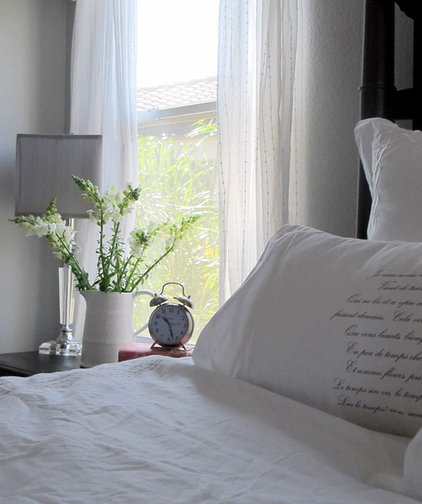Main factors include social ties, freedom, UN-sponsored report says

Freedom, prosperity and strong social ties are major factors in a nation's happiness, a new study suggests.
Canada has some of the happiest people on the planet because of long life expectancy, high average income and robust social ties, according to a survey sponsored by the United Nations in which Canada ranked sixth.
And it appears our cold, harsh winters make us merrier, not morose, since the only people who say they feel happier than Canadians are citizens of fellow northern nations, in order: Denmark, Norway, Switzerland, Netherlands and Sweden.
The United States ranked 17th in the report, trailing the United Arab Emirates, Panama and Mexico. Libyans were in the middle of the pack in 78th, while the globe's most sorrowful citizens reside in West African neighbours Benin and Togo.
Top 10 happiest countries
1. Denmark
2. Norway
3. Switzerland
4. Netherlands
5. Sweden
6. Canada
7. Finland
8. Austria
9. Iceland
10. Australia
"One thing that struck me this time is that of the 150 countries we look at — and we're measuring a period roughly from 2005 to 2010 — is how many had significant increases or decreases — 60 had big increases but 40 had a big decrease," co-author John Helliwell, professor emeritus of economics at the University of British Columbia, told CBC News.
Overall, the world is getting happier, the report says, though there are stark regional contrasts.
While people in Latin America and the Caribbean are more content — by seven per cent since 2007 —residents of the Mideast and North Africa, many of whose countries have been racked by political turmoil in recent years, are 11.7 percentage points more miserable.
"The Arab Spring wasn't good for a lot of people in those regions," Helliwell said. "But the major declines were the countries that were hardest hit in the euro crisis — i.e. Greece, Italy, Spain and Portugal."
The happiness rankings are largely based on the so-called life-evaluation results from the Gallup World Poll, conducted in more than 150 countries every year since 2005. The poll asks people to describe their happiness on a scale from zero to 10. The average happiness level in the 2013 World Happiness report was 5.1. Canadians scored 7.48, below Denmark at 7.69 but well above Togo at 2.94.
The paper's authors say six factors account for three-quarters of the differences among residents of surveyed countries:
- GDP per capita.
- Life expectancy.
- Perceived national corruption.
- Freedom to make life choices.
- Generosity of fellow citizens.
- Having someone to rely on in times of trouble.
However, they emphasize that while the most cheerful countries on the planet are also some of the wealthiest, income is a less important contributor than things like personal freedom and social supports.
Jens Norlem, who lives in Denmark, told CBC News he wasn't surprised his country led the rankings, which he said is a national point of pride.
"It's a very equal country," Norlem said. "There's not a lot of very rich people and there's not a lot of very poor people. There's a very big group of the middle class. And people have a high level of education, so people participate very much in elections and stuff like that."
However, Norlem said, what sets Denmark apart from a country like the United States is simple peace of mind.
"You feel that you have confidence in the system — in the governmental system and in other people also," he said.
"It's a very typical thing here that if you walk up to people in the street and ask them a question, they'll try to help. They wouldn't think, 'Who is this person coming up to me? He's probably trying to rob me.'
"Which I guess is a bit different in the United States, just taking an example, where lot of people have guns and try to protect themselves, so they can shoot anybody coming up to them."
The report, co-edited by Helliwell with Jeffrey Sachs, a professor of development and health policy at Columbia University in New York, and London School of Economics professor emeritus Richard Layard, suggests more countries use citizen happiness as a measure of progress, citing the South Asian kingdom of Bhutan, which has developed a Gross National Happiness Index and aims above all to maximize it.
Helliwell said this year's report, created under the aegis of the UN Sustainable Development Research Initiative, is meant to be a kind of blueprint for governments to consider.
"It's so the objectives of governments should include happiness," Helliwell said. "It's important we have the science and the measures there so they are taken and understood. The report is intended to play into discussions about world development goals for 2015 to 2030."
Other countries using happiness levels or similar measures of wellbeing to gauge policy include Brazil, Britain and New Zealand, the study says.











 A film festival in the TTC
A film festival in the TTC





 If your teenager has a blasé attitude toward chemistry, this application might be a good investment to change his or her mind. The Periodic Table of the Elements can seem like a hodgepodge of letters and numbers that describe seemingly abstract elements. This application makes the abstract more understandable with more than 500 pictures of the elements, as well as stories about their origins. If you’re wondering if the $13.99 price tag for this app is worth it, Stephen Fry describes it as “Alone worth the price of an iPad.”
If your teenager has a blasé attitude toward chemistry, this application might be a good investment to change his or her mind. The Periodic Table of the Elements can seem like a hodgepodge of letters and numbers that describe seemingly abstract elements. This application makes the abstract more understandable with more than 500 pictures of the elements, as well as stories about their origins. If you’re wondering if the $13.99 price tag for this app is worth it, Stephen Fry describes it as “Alone worth the price of an iPad.” Warning: This is not a good app for the squeamish. But it might be a good way for the dissection-shy teenager to gear up for the real frog dissection – or for conscientious objectors to get an interesting alternative. The animated frog body is more ... palatable than the actual formaldehyde-drenched frog flesh and gives a good amount of information about each of the different frog organs and parts.
Warning: This is not a good app for the squeamish. But it might be a good way for the dissection-shy teenager to gear up for the real frog dissection – or for conscientious objectors to get an interesting alternative. The animated frog body is more ... palatable than the actual formaldehyde-drenched frog flesh and gives a good amount of information about each of the different frog organs and parts.


